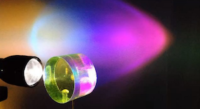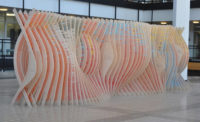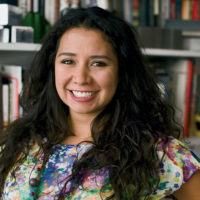In a workshop near the Greenpoint waterfront in Brooklyn, New York, Christopher Williams, Charles Constantine, and Drew Seskunas are tinkering with a fog machine, a tub of ice, and a plastic-walled room—a mock-up of their latest architectural installation. Williams flicks a switch, and a heavy mist hisses in, swirling around a series of colored LEDs. "This is a very early stage of it," explains Seskunas. "It's like a little lab."
Such experiments are essential to the way Williams, Constantine, and Seskunas—a master craftsman, an industrial designer, and an architect—work. As cofounders of the firm the Principals, their combined skills and DIY ethos result in environments and objects that challenge expectations of traditional design: walls that seem alive, materials that defy their intended use.
"We want to produce work that allows us to look at the world in a new way," says Seskunas. "Our projects are about decontextualizing elements to expand our understanding."
The three founded the Principals in 2011 after an all-nighter in a metal shop where Constantine and Williams worked. At the time, Seskunas (who knew Constantine from childhood and Pratt Institute) was leading the Berlin outpost of the design agency SAQ, and he needed help fabricating a sculptural lamp. The red-eye collaboration went so well, they decided to start a firm.
The first major project the team pursued was Cosmic Quilt, a parabolic canopy made from silver-coated paper that undulated according to movement beneath it through a system of light sensors and motors. After a successful Kickstarter campaign, they built Cosmic Quilt for a design fair in New York's Soho. The project was noticed by a scout for the Bonnaroo music festival and later installed in its VIP tent.
From there, commissions trickled in, including requests for product design, which resulted in objects as diverse as a set of concrete dominos and a steel hip flask that looks as if it were liquid. Word of their interactive environments spread. For MoMA PS1's "Warm Up" concert series last summer, they hooked up a blanket of pinwheels to a fan so that it would ripple like a wheat field behind the performers on stage.
Last year, the audio company Sonos approached the firm to design a sound environment for a collaboration with the electronic musician Dev Hynes (aka Blood Orange). Conversations with Hynes led to the question, "If the architecture was fluid, and the sound more architectural, could we cross those two entities and create a third thing out of it? Seskunas recalls. Drawing from what they learned with Cosmic Quilt, the Principals created Ancient Chaos, a canopy made from an assemblage of reflective Mylar squares. "Our work self perpetuates—once you play with a material and you actually see a project come to fruition, you start to have other ideas," explains Williams. Rather than light, the work responded to the frequencies of Hynes' piece. "Sometimes we design to evoke a feeling," says Constantine. "For Cosmic Quilt or Ancient Chaos there was a feeling, but it there was also a playfulness."
Now the Principals can sustain their business entirely on commissions as increasingly prominent clients line up, including Ford and a major tech company, which the firm cannot yet name. The Principals are also in talks to design a permanent retail space in Manhattan.
Back in the studio, the three continue their cloud test, trying to get the opacity of the mist just right. This project marks a recent shift in the Principals' work, experimentation with so-called "ethereal materials"—including spandex mesh and clouds, in the vein of Olafur Eliasson's installations, Frei Otto's canopies, and Diller Scofidio + Renfro's Blur Building (2002). Says Seskunas, "We're trying to figure out ways the built environment can be not so built." It's the sort of thinking that suggests the Principals are built to last.
| Recording artist and songwriter Devonté "Dev" Hynes, a.k.a. Blood Orange, recently performed within a sonic-spatial installation created in collaboration with design firm The Principals. New Yorker music critic Sasha Frere-Jones moderated a pre-concert interview with the artists. |























